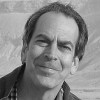The Dutch rewilding project that took a dark turn
In 2018, thousands of dead animals, emaciated from starvation, lay strewn across a famous Dutch rewilding project. Was it animal cruelty or just nature taking its course?
In February 2018, train commuters travelling between the Dutch cities of Almere and Amsterdam were horrified to see animal carcasses strewn across the landscape. They were passing by the Oostvaardersplassen, one of Europe's most infamous rewilding projects, known for its diverse birdlife and wild cows, deer and horses.
For many years, beginning in the 1980s, the ethos at the Oostvaardersplassen was not to intervene and to allow nature to take its own course. The pioneering approach helped shape the conversation around rewilding and influenced nature restoration projects across Europe.
But this approach took a dark turn during the harsh winter of 2017-18 when thousands of cows, horses and deer ended up being shot before they starved to death, sparking huge public backlash. The landscape at that time more closely resembled a desolate wasteland than a vibrant conservation area. Bones were scattered across the blackened ground and there were no trees or shrubs to be seen.
"It was a completely different sight… a monotonous grassland," says Hans-Erik Kuypers, the park ranger from Staatsbosbeheer, the national forestry service, who is guiding me around the reserve.
Seven years later, I am walking through the Oostvaardersplassen. None of what Kuypers describes is visible. He points out an astonishing array of birdlife, wading through clear pools of water, and clusters of elder, willow and hawthorn trees dotting the landscape.
A white-tailed eagle glides through the sky. A herd of sleek wild horses roll in the grass. Large bulls graze on lush vegetation, against a backdrop of windmills. The air is filled with birdsong. It's difficult to believe that we are just a 40-minute drive from the buzzing centre of Amsterdam.
The events of 2018 led to a change in management; the rangers now actively intervene to prevent starvation. They plant trees, feed the animals if needed, and keep the overall numbers in check. But some still argue that this is unnatural – and that the reserve should be left free of human intervention.
"There are still some people who think we should be doing it differently," says Kuypers. "[Rewilding] depends on your aims, but also on your philosophy. What are the human goals which we project onto nature?"
It's a debate that goes to the very heart of rewilding, the nature restoration movement that has swept across the world in recent decades. Perhaps nothing illustrates the line that divides these two perspectives more than what happened at Oostvaardersplassen seven years ago.
The Oostvaardersplassen was created back in 1968 when an inland sea was drained to build two new cities, Lelystad and Almere, in the Netherlands' youngest province, Flevoland. The initial plan was to use the remaining land for industrial development.
But not long after the creation of Flevoland, the swampy part of the Oostvaardersplassen became an important site for greylag geese. The migratory birds would feed on the reedbeds in the marsh during the moulting season in May and June, when they shed and regrew their flight feathers.
The geese played an important role as ecosystem engineers – they maintained the marsh for other birds by keeping the reed beds open and by creating small pools of clear water which supported a diverse array of aquatic species, says Frank Berendse, a retired professor in nature management at Wageningen University in the Netherlands and an early advocate for nature restoration at the Oostvaardersplassen.
"The area was a paradise for marsh birds," Berendse recalls. The rich marshy ecosystem was a fertile breeding ground for many different birds including the little bittern, little egret and spoonbill. "It was one of the most beautiful birding areas in the Netherlands, and in Europe, during that period," says Berendse.
In 1979, Dutch biologist Frans Vera, who had been a PhD student of Berendse's, wrote an article titled The Oostvaardersplassen: a unique ecological experiment in which he argued that the area had become one of the most important areas for European marsh and waterbird populations.
"It was unbelievable – a treasure trove. But nobody was calling for it to be protected, because so much [nature] had already been lost in the Netherlands," says Vera.
Vera called for the area to be designated as a nature reserve, and soon became the leader of a movement pushing for this. In 1983, the Oostvaardersplassen was at last designated a nature reserve, spanning 56 sq km (23 sq miles), roughly the size of Manhattan. The reserve now consists of marshland and wet and dry grasslands and is managed by the Dutch national forest service.
By the early 1990s, the number of greylag geese visiting the Oostvaardersplassen totalled 60,000, making it the most important moulting site for the birds in Europe.
Before and after the moulting season, the geese would fatten up by feeding on the grassland, making it vital to keep the landscape open. But vegetation was quickly encroaching and there were concerns that, without intervention, the area would turn into a dense forest, Vera says.
To prevent this from happening, Vera, who by now was working for the national forest service, suggested introducing large herbivores and creating a palaeolithic wood-pasture landscape.
Vera believed that before people started farming in prehistoric times, Europe was not covered by closed-canopy forest – the prevailing view at the time – but rather by "dynamic pasture woodland". In a paper, he argued that before humans altered the land, the grazing of tarpan and aurochs (the wild ancestors of domestic horses and cows) created grassland and stopped trees from covering the entire continent.
Vera proposed introducing analogues to prehistoric grazers to the Oostvaardersplassen to recreate this grassland in a varied landscape.
"If we wanted to maintain the marshland, we had to preserve the habitat of the greylag geese," Vera says.
To keep the landscape open and maintain the grassland for the geese, the traditional view was that cows were needed, he says. "Everyone said that if........






















 Toi Staff
Toi Staff Gideon Levy
Gideon Levy Tarik Cyril Amar
Tarik Cyril Amar Stefano Lusa
Stefano Lusa Mort Laitner
Mort Laitner Robert Sarner
Robert Sarner Andrew Silow-Carroll
Andrew Silow-Carroll Constantin Von Hoffmeister
Constantin Von Hoffmeister Ellen Ginsberg Simon
Ellen Ginsberg Simon Mark Travers Ph.d
Mark Travers Ph.d
